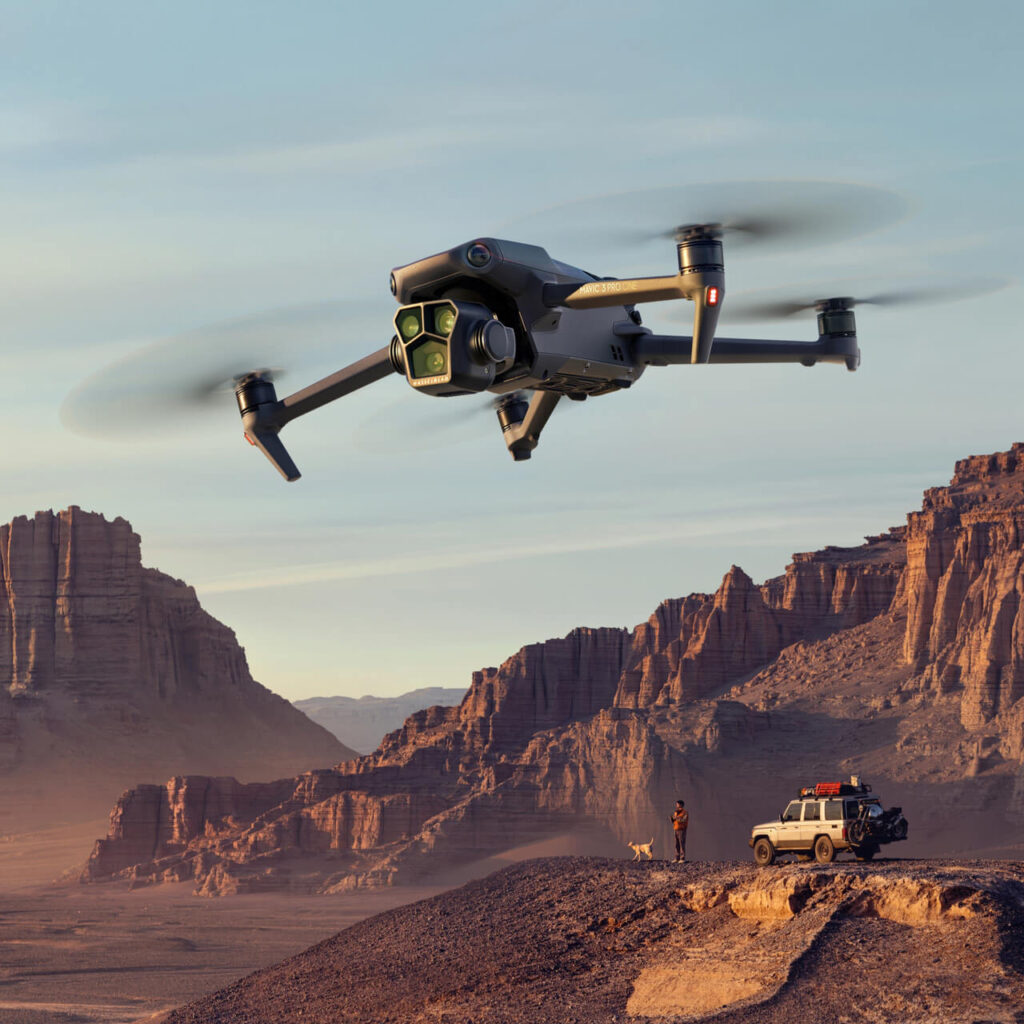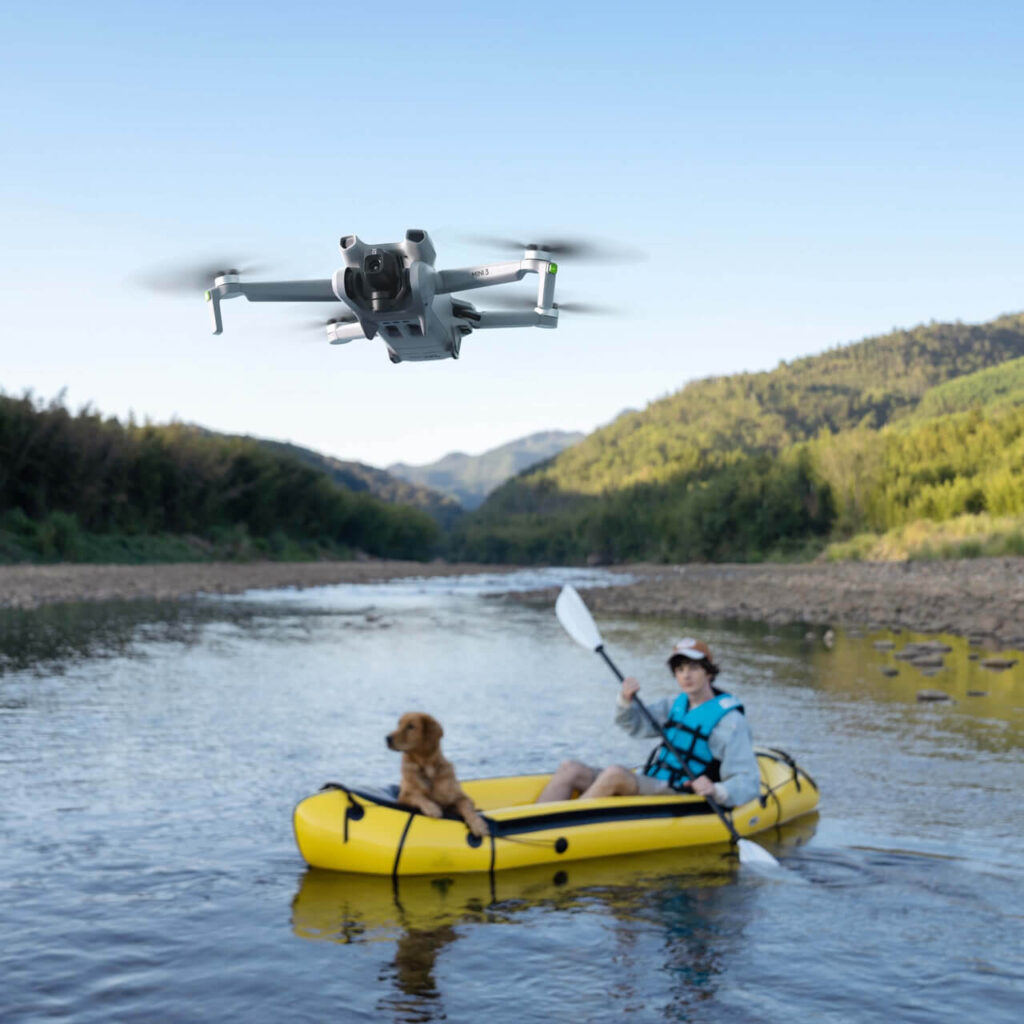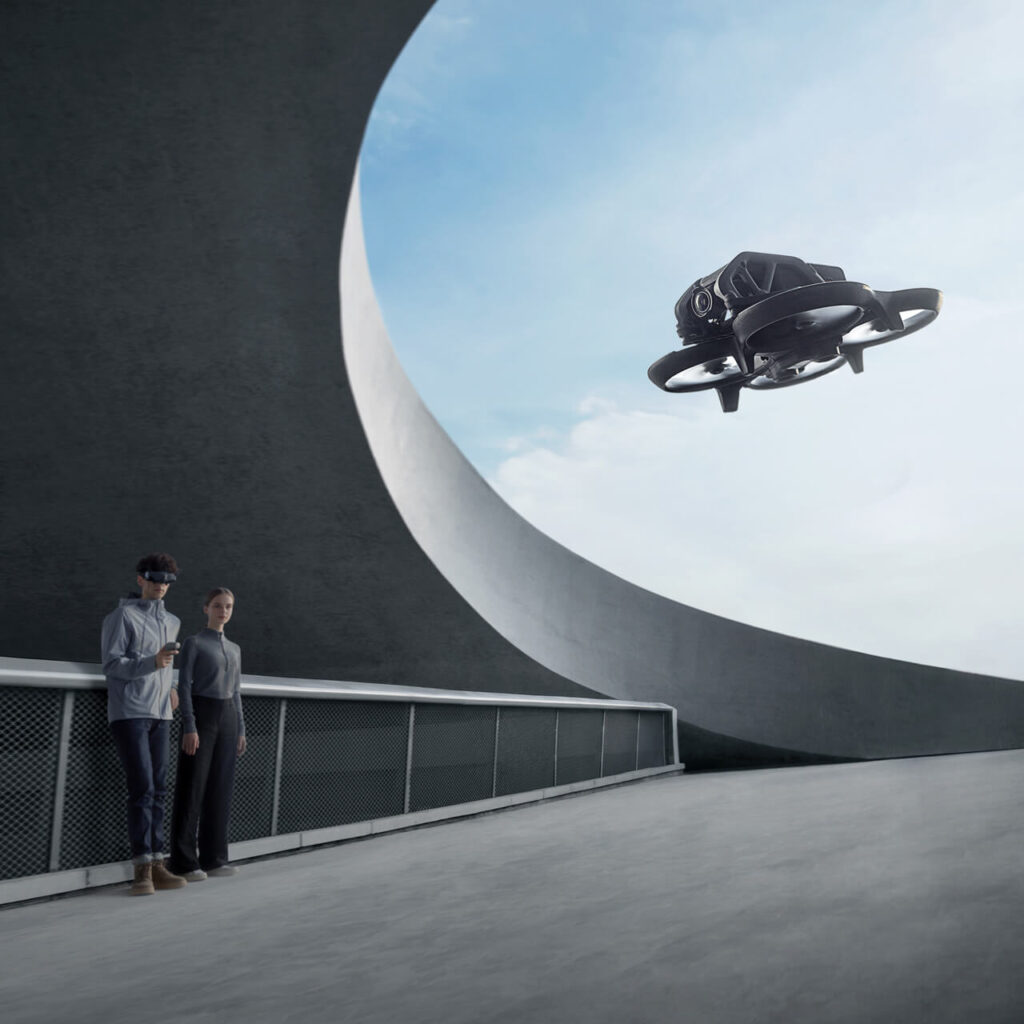Imagine ordering medicine during an emergency and receiving it within minutes, not hours. Or picture a business sending critical spare parts to a site miles away without relying on traditional couriers. This is the promise of drone delivery, a technology that is quickly becoming one of the most talked-about innovations in logistics.
Globally, companies like Amazon, UPS, and Zipline have already shown what drones can achieve. In countries like Rwanda, drones have successfully delivered blood and vaccines to rural areas, while in the United States, test runs for food and parcel deliveries are expanding every year. These examples make one thing clear drone delivery is no longer just an idea, it’s a working reality.
India, with its vast geography, urban traffic challenges, and rural accessibility issues, is perfectly positioned to benefit from this technology. From faster last-mile delivery in cities to reaching remote villages with medical supplies, drones can bridge the gap that traditional logistics often struggles to cover. With the Indian government opening up policies and encouraging experimentation, businesses and consumers alike are becoming curious about the role drones will play in their everyday lives.
This is where Jetayu Gadgets steps in. As one of India’s trusted sellers of advanced drones from global brands like DJI, Autel, IdeaForge, Enzo, Parrot, and Skydio, Jetayu Gadgets provides access to the very tools that can make drone delivery possible. While they don’t manufacture drones themselves, they connect Indian businesses, institutions, and even individual buyers with the right technology to explore drone-powered solutions, including delivery.
In this blog, we’ll take a closer look at what drone delivery means, why India is preparing to adopt it, the benefits it brings for businesses and consumers, the challenges to overcome, and the drones that can actually support such use cases today.
What Is Drone Delivery and How Does It Work?
At its core, drone delivery is the use of unmanned aerial vehicles (UAVs) to transport goods from one location to another. Instead of trucks, bikes, or human couriers, drones act as the last-mile solution, often reaching destinations faster and more efficiently.
The process is fairly straightforward:
- A package is secured inside a specially designed compartment or attached to the drone.
- The drone’s onboard GPS and sensors guide it along a pre-programmed route.
- Using obstacle detection, AI-based navigation, and return-to-home features, the drone ensures safe delivery.
- Once near the delivery point, drones can either lower packages using a tether system or land briefly to drop them off.
While this might sound futuristic, real-world examples already exist. For instance, medical drones have been successfully used to deliver vaccines and blood samples in hard-to-reach regions. In fact, one of our earlier discussions on “The Fastest Blood Delivery in the World? A Drone in the Sky” highlighted how drones are saving lives through emergency healthcare logistics.
Drone delivery also depends heavily on payload and flight capabilities. Not all drones are built to carry weight, which is why guides like “How Much Load Can a Drone Carry? A Beginner-to-Pro Breakdown with DJI Models” are helpful for understanding limits before applying drones to real-world delivery operations.
Another crucial aspect is regulation. In India, as in most countries, drone deliveries can’t simply begin without permissions. If you’re new to this, our blog “Can I Fly My Drone Freely or Do I Need a License? Understand the Rules” breaks down the legal side of drone usage, which is particularly important when planning for delivery.
In short, drone delivery combines autonomous navigation, safety features, payload capacity, and regulatory compliance to function effectively.
Why India Is Looking Toward Drone Delivery
India’s unique geography and logistics challenges make it one of the most promising markets for drone delivery. With a mix of densely populated cities, hard-to-reach rural areas, and a fast-growing e-commerce sector, drones could help solve problems that traditional logistics often struggle with.
Key Drivers Behind Drone Delivery in India
- E-commerce Growth
- India’s e-commerce market is projected to reach USD 200 billion by 2026 (IBEF).
- Faster and more reliable last-mile delivery is crucial for companies like Amazon, Flipkart, and Swiggy, making drones an attractive solution.
- Healthcare Needs
- India has 65% of its population in rural areas, where access to timely medical supplies is limited.
- Drones can deliver vaccines, blood, or medicines in minutes, not hours.
- Traffic & Urban Congestion
- Major Indian cities like Delhi, Bengaluru, and Mumbai lose over 5 hours per week per commuter due to traffic (TomTom Traffic Index).
- Drones bypass this congestion, ensuring speed and efficiency.
- Government Push
- The Indian government has launched initiatives like the Drone Shakti scheme and liberalized drone rules in 2021.
- These policies encourage businesses to adopt drones in logistics, agriculture, and infrastructure.
Table: Why India Needs Drone Delivery
| Challenge | Current Situation in India | How Drone Delivery Helps |
|---|---|---|
| Urban Traffic | Long delivery times in metros | Bypasses congestion with aerial routes |
| Rural Accessibility | 65% of population in villages, weak roads | Direct aerial reach with minimal infrastructure |
| E-commerce Demand | USD 200B by 2026 | Faster last-mile delivery, reduced costs |
| Healthcare Logistics | Delay in critical supplies in remote areas | Rapid medical deliveries, life-saving impact |
| Carbon Emissions | Growing delivery fleets add pollution | Electric drones offer a greener alternative |
This growing interest also ties into broader drone applications we’ve covered before. For example, in our blog on “Can Drones Solve India’s Labour Crisis in Agriculture?”, we saw how drones are transforming rural industries. Similarly, drone delivery represents another step where technology fills critical gaps in India’s economy.
Benefits of Drone Delivery for Businesses
For Indian businesses, drone delivery is not just about faster logistics, it’s about transforming operations, reducing costs, and reaching customers in ways that were previously impossible. With the right drones, supplied by sellers like Jetayu Gadgets, companies can start experimenting with delivery-focused solutions tailored to their industry.
1. Faster Last-Mile Delivery
- Drones can cut delivery times from hours to minutes, especially in congested cities.
- For e-commerce and food delivery businesses, this can mean higher customer satisfaction and repeat orders.
2. Reduced Operational Costs
- Traditional delivery fleets require drivers, fuel, and vehicle maintenance.
- Electric drones significantly reduce per-delivery costs once scaled.
3. Expanded Market Reach
- Businesses can serve rural and remote customers where logistics networks are weak.
- For example, a pharmacy chain could reach a village that currently waits days for medicines.
4. Competitive Advantage
- Early adopters of drone delivery stand out in the market.
- Just like companies that embraced digital payments earlier, businesses using drones gain a modern, tech-forward image.
5. Sustainability
- Drones run on batteries and help reduce carbon emissions.
- As Indian companies face increasing ESG (Environmental, Social, and Governance) pressure, this becomes a strong advantage.
Table: Business Benefits of Drone Delivery
| Business Type | Traditional Delivery Issues | How Drones Provide Solutions |
|---|---|---|
| E-commerce & Retail | Delays due to traffic and high courier costs | Instant last-mile delivery, lower costs |
| Food Delivery | Perishable items often delayed in traffic | Fresh, fast drop-offs via drones |
| Healthcare Providers | Lack of timely access to rural patients | Critical supplies delivered quickly |
| Construction & Industry | Slow transport of parts to remote sites | On-demand supply of small tools/spares |
| Pharmaceutical Chains | Limited rural coverage | Reach patients in hard-to-access areas |
This shift aligns with what we discussed in “Who’s Really Watching Your Construction Site? In 2025, It Might Be a Drone”, where drones were shown to give businesses operational visibility. Similarly, with delivery, drones provide not just speed but also reliability, unlocking new possibilities for growth.
Benefits of Drone Delivery for Consumers
While businesses look at efficiency and cost savings, for consumers, drone delivery promises convenience, speed, and accessibility. In a country like India, where both urban and rural lifestyles have unique challenges, drones can bridge the gap between what people need and how quickly they can get it.
1. Faster Access to Essentials
- In metro cities, drones can deliver groceries, medicines, or even meals in under 30 minutes.
- In emergencies, life-saving drugs or blood samples can arrive far quicker than traditional couriers.
2. Improved Rural Access
- Villages often face supply shortages due to poor road infrastructure.
- Drones can deliver medicines, education supplies, or even online shopping orders directly to rural consumers.
3. Reliability During Disruptions
- Floods, traffic jams, or natural disasters often delay road deliveries.
- With drones, packages can still reach homes when traditional supply chains break down.
4. Safer Delivery Experience
- Drones minimize human contact, especially useful in health-sensitive times like the COVID-19 pandemic.
- Consumers get direct doorstep delivery with minimal handling.
5. Eco-Friendly Option
- Growing awareness among Indian consumers about sustainability makes drone delivery appealing.
- Knowing their order arrives via an electric-powered drone instead of a fuel-driven vehicle adds a “green” factor.
Table: How Consumers Benefit from Drone Delivery
| Consumer Need | Traditional Delivery Limitation | Drone Delivery Advantage |
|---|---|---|
| Emergency Medicines | Hours of wait, especially in rural areas | Delivery in minutes, even to remote regions |
| Urban Food/Groceries | Traffic delays, late deliveries | Faster drop-offs, fresher food |
| Rural E-commerce Orders | Weak infrastructure slows delivery | Direct-to-village aerial supply |
| Disaster Situations | Blocked roads disrupt supplies | Aerial access even in floods/landslides |
| Eco-Conscious Lifestyle | Fuel-driven fleets increase emissions | Cleaner, greener deliveries with drones |
This mirrors what we highlighted in our blog “The Fastest Blood Delivery in the World? A Drone in the Sky”, where consumers especially patients benefited directly from quick and life-saving drone operations. Similarly, blogs like “Drones Could Be Heroes in the Northeast’s Flood and Landslide Crisis” show how drones already help citizens during emergencies, proving their value beyond just convenience.
Key Challenges and Limitations in India
While the idea of drone delivery is exciting, India faces several hurdles before it can become mainstream. From regulatory restrictions to infrastructure gaps, businesses and consumers need to understand these challenges to set realistic expectations.
1. Regulatory Restrictions
- Drone flights for delivery are not yet widely permitted without approvals from the DGCA (Directorate General of Civil Aviation).
- Businesses must obtain special licenses and follow the Drone Rules 2021 for Beyond Visual Line of Sight (BVLOS) operations.
- As we explored in “Can I Fly My Drone Freely or Do I Need a License? Understand the Rules”, licenses are critical for drone use, and this applies even more to delivery.
2. Payload Limitations
- Most consumer drones can carry only 500 grams to 2 kg.
- Heavy payload drones exist, but they are expensive and require special permits.
- For reference, our blog “How Much Load Can a Drone Carry? A Beginner-to-Pro Breakdown with DJI Models” explains these limits in detail.
3. Safety and Airspace Management
- Drones risk colliding with aircraft, power lines, or buildings if not monitored properly.
- India lacks a fully developed UTM (Unmanned Traffic Management) system to safely integrate drones into the airspace.
4. Infrastructure Gaps
- Drone delivery requires designated take-off and landing points, which are rare in crowded Indian cities.
- Lack of standardization in packaging for drone delivery also slows adoption.
5. High Initial Costs
- Delivery drones, ground systems, and pilot training require large investments.
- Small businesses may struggle to adopt drone delivery without government incentives.
6. Weather and Environmental Challenges
- Monsoons, dust storms, and high winds limit drone operations in India.
- Unlike road delivery, drones are highly dependent on stable weather conditions.
Table: Challenges Hindering Drone Delivery in India
| Challenge | Impact on Drone Delivery | Current Status in India |
|---|---|---|
| Regulations | Limits BVLOS and large-scale operations | Approvals needed from DGCA |
| Payload Capacity | Restricts what items can be delivered | Most drones limited to 2 kg |
| Airspace Safety | Risk of accidents and unauthorized flights | No nationwide UTM yet |
| Infrastructure | No proper hubs/landing pads | Still in pilot testing phase |
| Costs | High purchase, training, and setup costs | Affordable only for large players |
| Weather Dependence | Disruptions in monsoon or extreme climates | Affects consistency in delivery |
These limitations are why drone delivery in India is still in pilot stages. While trials are happening with food, medicine, and e-commerce parcels, full-scale rollouts will need stronger policies and infrastructure.
Best Drones Supporting Delivery Use Cases (Jetayu Gadgets is a Seller)
Before we jump in, a quick reality check. Most “delivery drones” are customized builds or modified enterprise platforms with add-ons like a payload box, release winch, or temperature-controlled container. That means you typically start with a reliable enterprise airframe and integrate delivery hardware and software around it.
Shortlist of Popular Platforms for Light-to-Medium Payload Pilots
| Platform (Brand) | Typical Role in Delivery Pilots | Indicative Payload Band* | Flight Time (no payload) | Weather & Safety Notes | Why Teams Pick It |
|---|---|---|---|---|---|
| Matrice 350 RTK (DJI) | Workhorse multirotor for tether drop or small parcel box | ~1–2.5 kg (with integration) | Up to ~50+ min | IP-rated airframe, multi-sensor options, robust RTK | Mature ecosystem, high reliability, strong parts and service |
| Matrice 300 RTK (DJI) | Proven previous-gen workhorse for pilots | ~1–2 kg | Up to ~40–45 min | Widely fielded, strong obstacle sensing | Value play for pilots that don’t need latest gen |
| Agras Series (DJI) | Heavy lift for agri, occasionally repurposed for special payloads | High thrust, not ideal for parcels | ~15–25 min (spray loads) | Built for harsh conditions | When lift and ruggedness matter more than elegance |
| EVO Max 4T (Autel) | Recon & inspection platform, adaptable for micro-payload tests | Light payload only | Up to ~40+ min | Strong obstacle avoidance, good thermal suite | Flexible, compact field kit |
| Dragonfish (Autel) | VTOL fixed-wing for longer corridors | Light payloads with integration | Long endurance (fixed-wing) | Requires ops maturity, dedicated launch/land zones | Range-focused corridor trials |
| Switch / Netra (ideaForge) | Indian enterprise VTOL/multirotor used by agencies | Light-to-medium (model-dependent) | Long endurance variants available | Indian terrain-tested, reliable comms | Local support, proven in tough conditions |
| Parrot ANAFI USA | Micro-payload experiments, sensor carriage | Very light payload only | ~30+ min | Compact, secure comms | Quick-start pilots, training, POC work |
| Skydio X2 | Autonomous nav in complex spaces, micro-payload | Very light payload only | ~30+ min | Best-in-class autonomy in GNSS-challenged areas | Dense urban/autonomy-first trials |
FAQs on Drone Delivery in India
1. Is drone delivery legal in India?
Yes, drone delivery is legal in India but regulated under the Drone Rules 2021 by DGCA. Businesses must obtain proper permissions, comply with airspace zoning, and use approved drone models for delivery.
2. Which industries benefit most from drone delivery in India?
The key industries include healthcare (medicine and blood delivery), agriculture (seed and pesticide spraying), e-commerce (last-mile delivery), and logistics (warehouse-to-hub transfers).
3. What are the limitations of drone delivery in India right now?
Limitations include restricted payload capacity, battery life issues, weather dependency, and the need for dedicated infrastructure like drone ports or landing zones.
4. How soon will consumers see large-scale drone delivery services?
Pilot projects are already active in states like Telangana, Karnataka, and Gujarat. Large-scale adoption for e-commerce and medical supplies is expected within the next 3 to 5 years, depending on regulations and infrastructure.
5. Can small businesses also use drones for delivery?
Yes, small businesses can explore local drone delivery options. However, they need partnerships with drone service providers or retailers like Jetayu Gadgets, who supply certified drones and support compliance with Indian drone laws.



